*NURSING > QUESTIONS & ANSWERS > Principles of Carbohydrate Testing, Lipid Testing, and Protein Analysis. 20 QnA Plus Explanations (All)
Principles of Carbohydrate Testing, Lipid Testing, and Protein Analysis. 20 QnA Plus Explanations
Document Content and Description Below
Principles of Carbohydrate Testing, Lipid Testing, and Protein Analysis 1. A patient has lipid malabsorption in the small intestine, what clinical effects would you expect them to develop? 1. V... itamin D 2. Vitamin A Vitamin A is a fat soluble vitamin and a deiciency will cause Blindness or Keratomalacia 3. Thyroxine 4. Cholesterol 2. Cystatin C has a few advantages over creatinine. What clinical situations would it be beneficial to use in? 1. The patient has bronchiectasis 2. Patient is a voracious carnivore Cystatin is inafected by diet, whereas creatinine is found in the muscles of all animals 3. Patient has very little funds for which to pay for the visit 4. Minimal renal damage Cystatin C begins to appear earlier in kidney damage and correlates with the first appearance of microlbuminuria 3. What are the storage requirements for BUN? 1. 4 days at Room Temp These samples last 4 days at Room Temp 2. Protected from light 3. Several Days at 4˚C 4. Several Years at -20˚C 4. A 63-year-old sedentary female who says that she loves country fried steak, but only eats fruits or vegetables maybe once a month, has an elevated HbA1c at 8.2%. What does this result tell the clinician? 1. The response of the body to insulin after a glucose load 2. The current level of blood sugar in the patient 3. Average blood sugar has been >126 mg/dL over the past 3 months The HbA1c test looks at the percentage of glycated hemoglobin. Glucose will stick on to proteins kind of like graffiti. The more grafitti artists you have, the more graffiti you will have on the circulating proteins. Similarly, the higher your glucose level, the more glycated hemoglobin you will have and the higher your HbA1c level will be. 4. The set point for blood sugar in the patient's body 5. What analyte is not actually measured in blood gas analysis? 1. pO2 2. pCO2 3. pH 4. HCO3 HCO3 is calculated. This is a valuable question to memorize, as it will likely show up on your boards 6. What apolipoprotein is associated with sudden cardiac death? 1. Apo D 2. Apo A-I 3. A-II 4. B-100 Apo B-100 is associated with lipid deposition and myocardial infarctions 7. The secretion of what hormone is suppressed after a glucose load is administered? 1. Aldosterone 2. Estrogen 3. Thyroxine 4. Growth Hormone A growth hormone suppression test is what we perform when we look for a tumor that is secreting GH independent of hypothalamic stimulation, meaning that it's independently hypersecreting the hormone and it is unregulated 8. Select the terms that shift the oxygen dissociation curve to the right and facilitate oxygen unloading from hemoglobin 1. Exercise Exercise raises temperature, it also increases the acidic content of the blood by creating lactic acid, and all of those factors facilitate unloading of oxygen into the tissues where we need it to produce ATP. 2. Alkalosis 3. Hypocarbia 4. Acidosis Exercise raises temperature, it also increases the acidic content of the blood by creating lactic acid, and all of those factors facilitate unloading of oxygen into the tissues where we need it to produce ATP. 9. What test is diagnostic for diabetes? 1. Fasting Blood Sugar 153 mg/dL ADA Diagnostic Criteria: Fasting Blood Sugar >126 mg/dL 2 hour OGTT >200 mg/dL HbA1c >6.5% 2. Fasting Blood Sugar 199 mg/dL ADA Diagnostic Criteria: Fasting Blood Sugar >126 mg/dL 2 hour OGTT >200 mg/dL HbA1c >6.5% 3. OGTT 154 mg/dL 4. OGTT 187 mg/dL 5. HbA1c 6.6% ADA Diagnostic Criteria: Fasting Blood Sugar >126 mg/dL 2 hour OGTT >200 mg/dL HbA1c >6.5% 10. What hormones are peptide hormones? 1. Growth Hormone (GH) Peptide hormones include; Prolactin, GH, ACTH, Oxytocin, and ADH 2. Epinephrine 3. PTH 4. Vasopressin (ADH) Peptide hormones include; Prolactin, GH, ACTH, Oxytocin, and ADH 11. Select the correct characteristics of the Jaffe Reaction 1. Interferences with uric acid The Jaffe reaction seems to be interfered with by protein, glucose, uric acid, ascorbic acid, acetone, ketoacids, and cephalosporins 2. Interferences with lipids 3. Explosive Picric Acid is structurally similar to TNT and even crust build up on the lid can explode when the lid is rotated 4. Reference range is higher for women than for men 12. A patient has just begun hyperventilating before being asked to share her thoughts in front of her class. What would you expect her blood gases to show? 1. pH 7.38 PaCO2 35 HCO3 28 2. pH 7.51 PaCO2 16 HCO3 26 This shows uncompensated respiratory alkalosis. No metabolic compensation is occuring because it just began 3. pH 7.44 PaCO2 15 HCO3 18 4. pH 7.36 PaCO2 24 HCO3 17 13. Select the common causes of secondary hypercholesterolemia 1. Skin Cancer 2. Bile Duct Obstruction Cholesterol is removed from our bodies in the bile, if the outflow tract is blocked, then we can't get rid of it, and our cholesterol will increase 3. Hypothyroidism Hypothyroidism decreases a person's metabolic rate and therefore, the use of lipids in our bodies for calorie production. Extra lipids just hanging around will be incorporated into cholesterol molecules 4. Diabetes Diabetes is noted to be an independent risk factor for the development of hypercholesterolemia and subsequent heart disease 14. What regulates the rate at which proteins migrate through a gel in electrophoresis? 1. Water solubility 2. Protein Size Proteins are differentiated in electrophoresis by two things: size and charge. I like to analogize this to carrying a boulder across a field. The larger the protein is, the more effort it will take to move the boulder across a big field. The greater the charge, the more handles it has to carry it across the field with your army of electrons. 3. Diffraction constant 4. Charge of the Protein Proteins are differentiated in electrophoresis by two things: size and charge. I like to analogize this to carrying a boulder across a field. The larger the protein is, the more effort it will take to move the boulder across a big field. The greater the charge, the more handles it has to carry it across the field with your army of electrons. 15. The value I get for BUN is 19.3 mg/dL. What will that value be when measured in mg/dL of Urea? 1. 0.111 2. 9.02 19.3/2.14=9.02 3. 41.3 4. 2.14 16. What is a probable root cause for metabolic alkalosis? 1. Aspirin Overdose 2. Vomiting This would cause metabolic alkalosis because these patients are losing Hyrdogen ions in the stomach acid in their vomitus. 3. Hyperventilation 4. Antacid Overdose This would cause a metabolic alkalosis because the antacids are just bases that neutralize the stomach acid in the stomach 17. What diagnosis might a patient have if they have hyperaldosteronism and they got nervous and hyperventilated for an extended period of time? 1. Mixed metabolic alkalosis and respiratory acidosis 2. Mixed metabolic and respiratory alkalosis Both the hyperaldosteronism and the hyperventilation cause an alkalosis, so we would expect the pH to be high because there can be no compensation until the patient stops breathing quickly. 3. Mixed metabolic and respiratory acidosis 4. Mixed metabolic acidosis and respiratory alkalosis 18. A patient has just taken an insane amount of Aspirin and is now breathing very quickly. What would you expect her blood gases to look like? 1. pH 7.51 PaCO2 89 HCO3 23 2. pH 7.28 PaCO2 18 HCO3 14 Metabolic acidosis with respiratory compensation. This is only partially compensated because the pH has not been brought back into the 7.35 to 7.45 window yet to be considered fully compensated 3. pH 7.43 PaCO2 68 HCO3 31 4. pH 7.26 PaCO2 41 HCO3 12 19. What characteristics are associated with the Glucose Oxidase method for glucose analysis? 1. Highly specific for B-D glucose Glucose oxidase uses a peroxidase reaction to create H2O2 which oxidizes a chromogen and the color change is detected. This reaction is also highly specific for B-D glucose 2. Uses horseradish peroxidase 3. The most accurate glucose assay 4. Performed in the presence of Mg++ 20. What type of protein structure describes the 3-dimensional interaction between side chains? 1. Secondary structure 2. Primary structure 3. Tertiary structure 4. Quaternary structure [Show More]
Last updated: 1 year ago
Preview 1 out of 13 pages
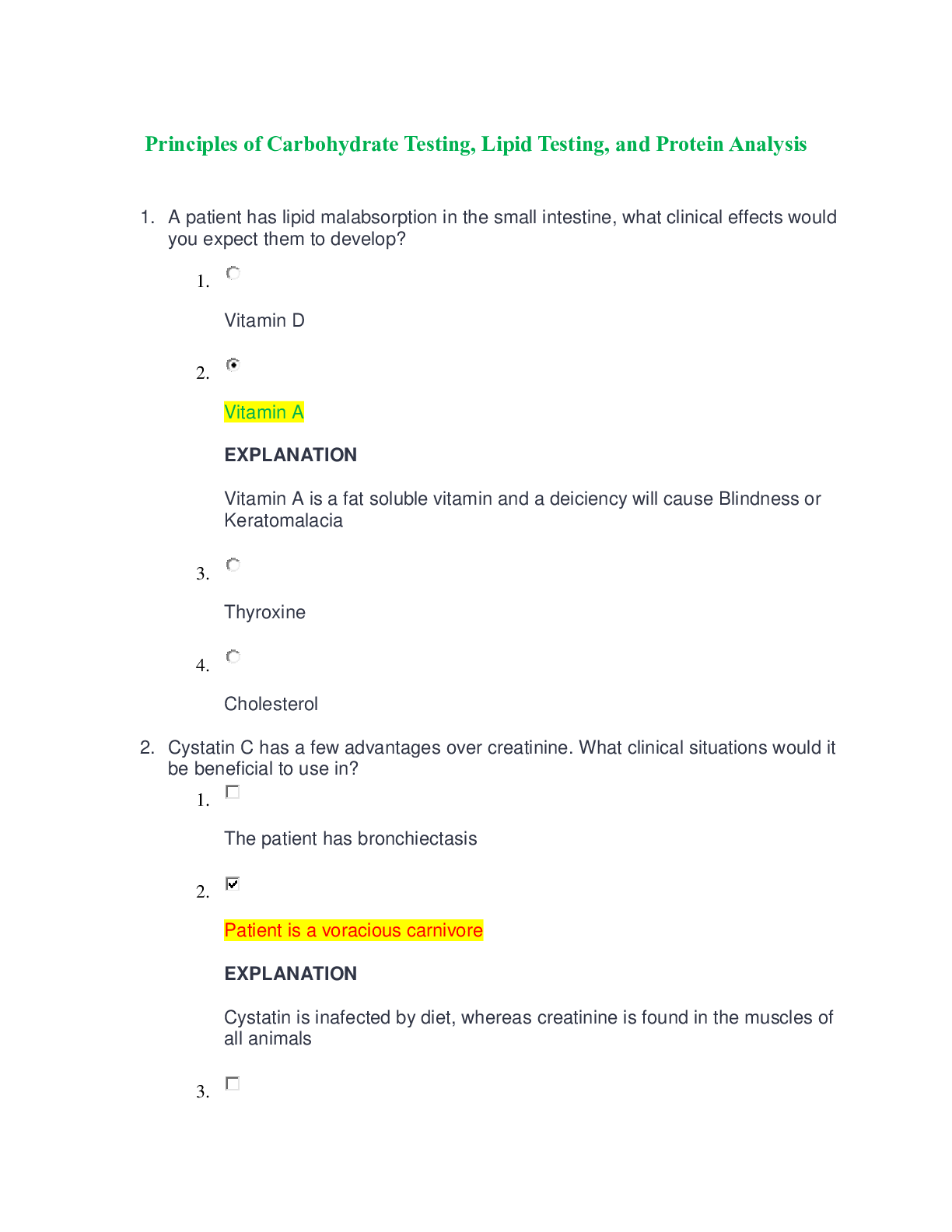
Reviews( 0 )
Document information
Connected school, study & course
About the document
Uploaded On
May 10, 2022
Number of pages
13
Written in
Additional information
This document has been written for:
Uploaded
May 10, 2022
Downloads
0
Views
72

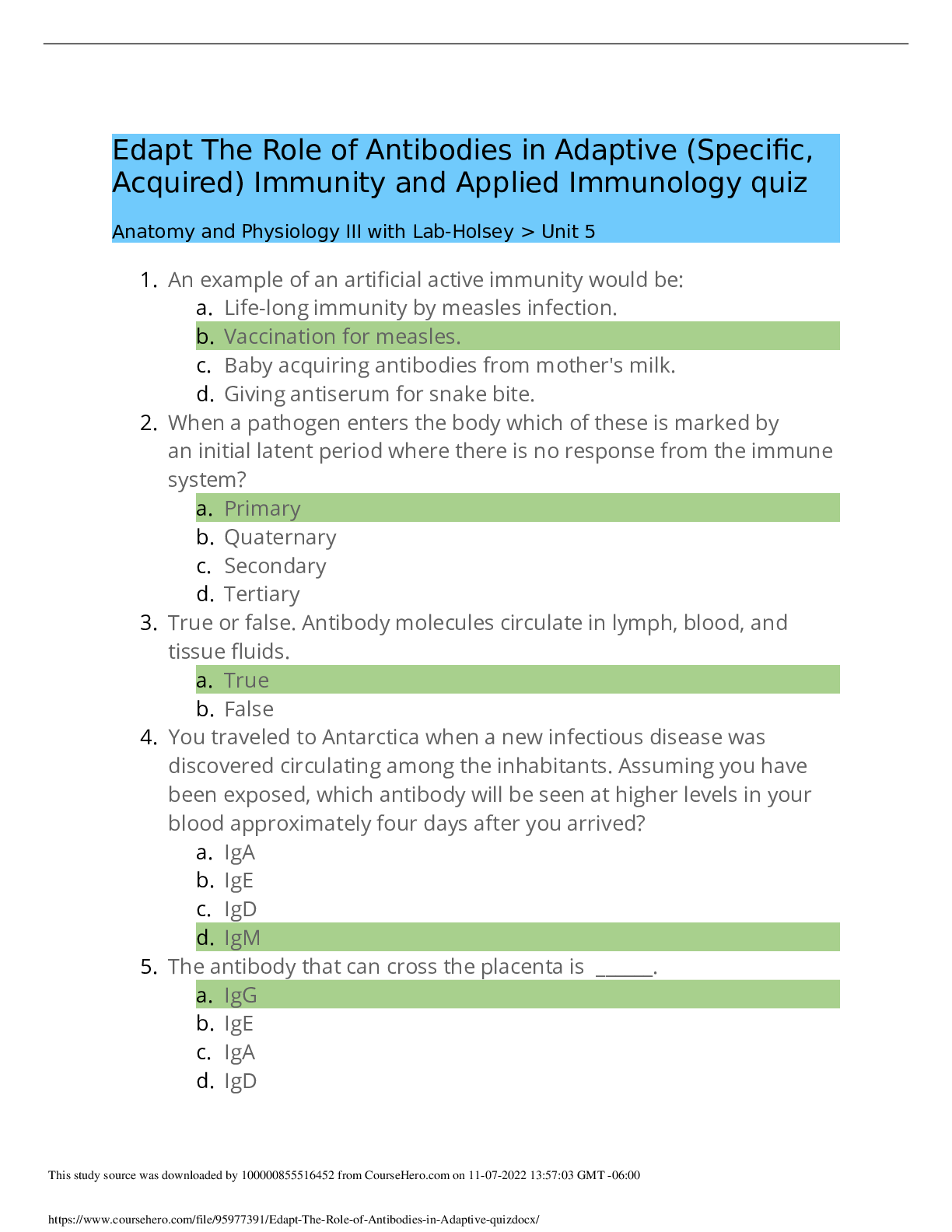
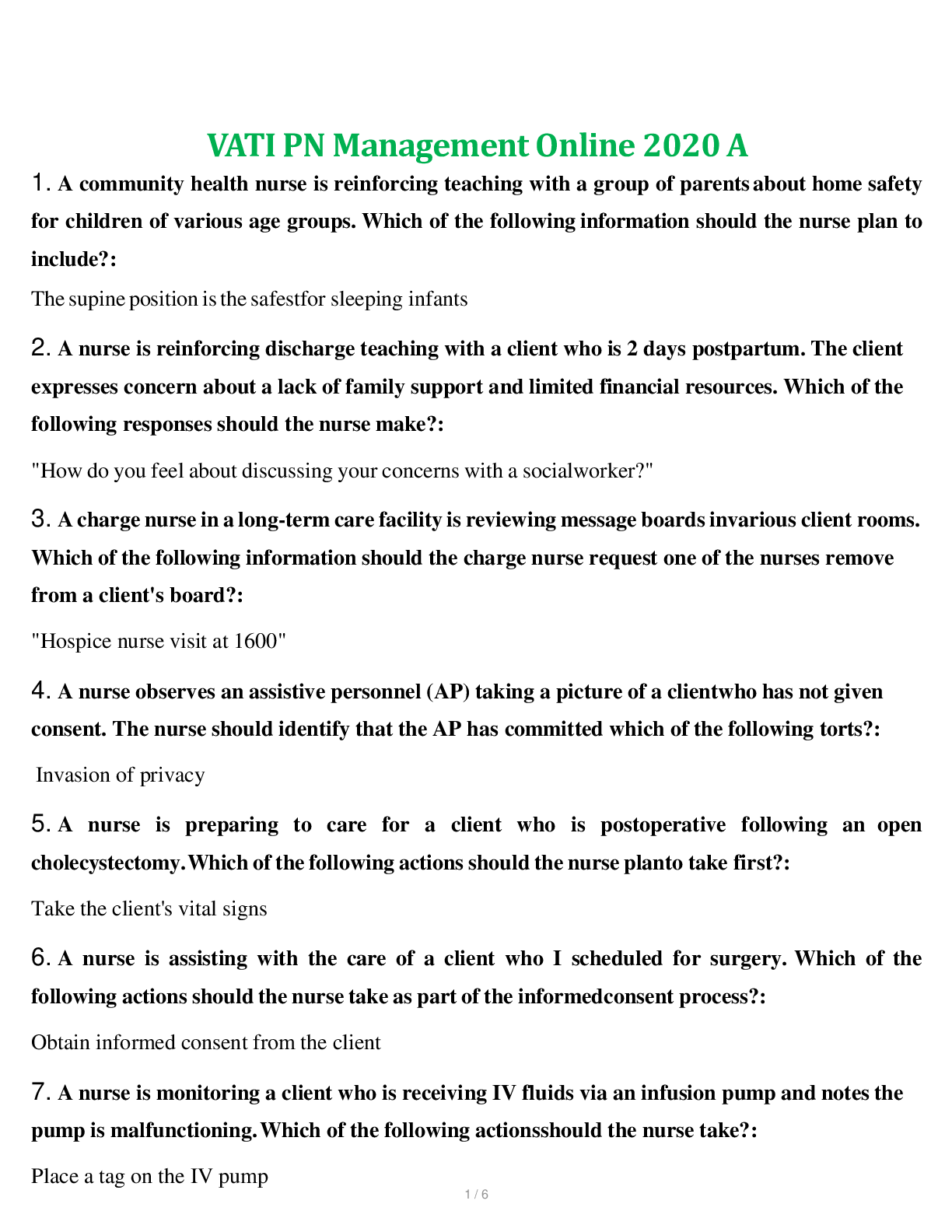
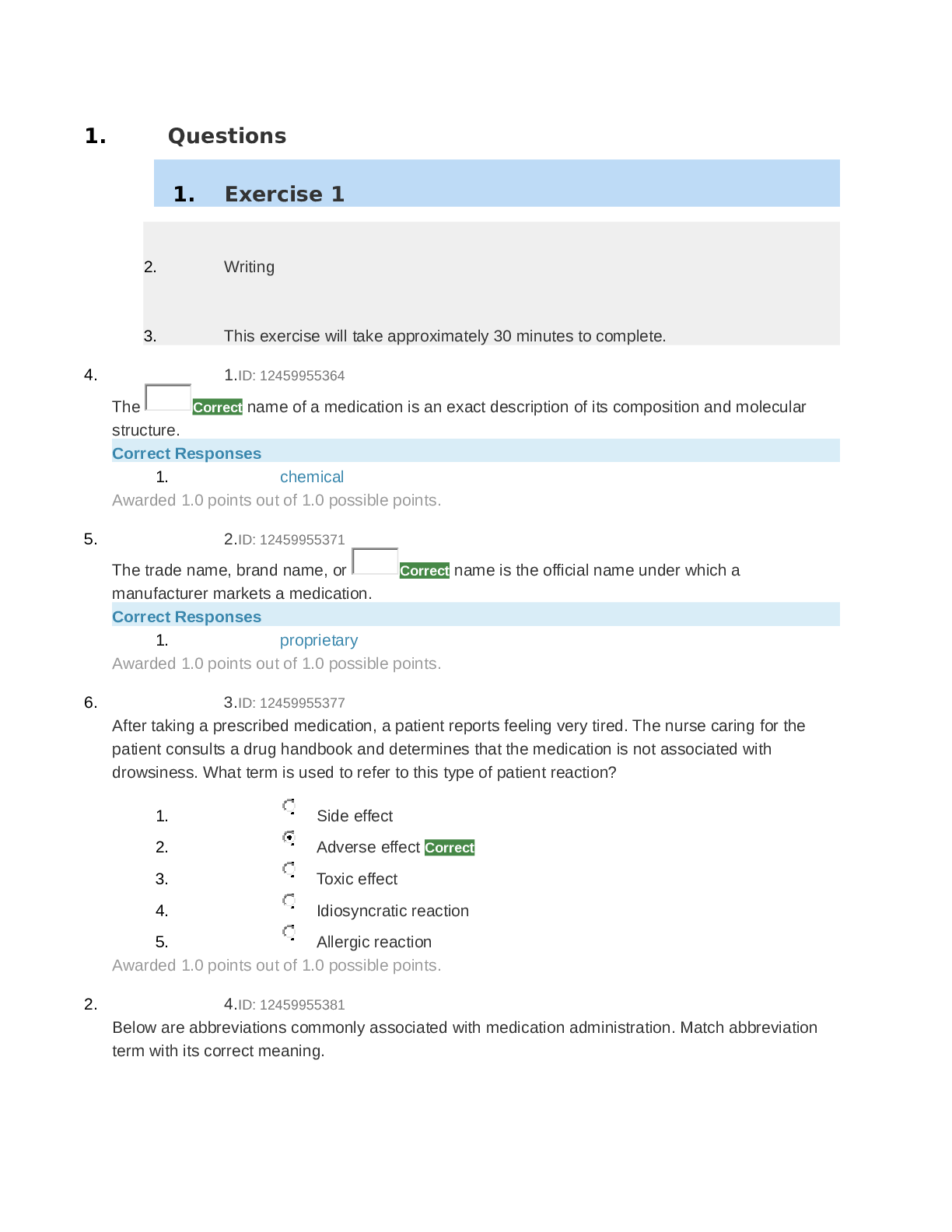

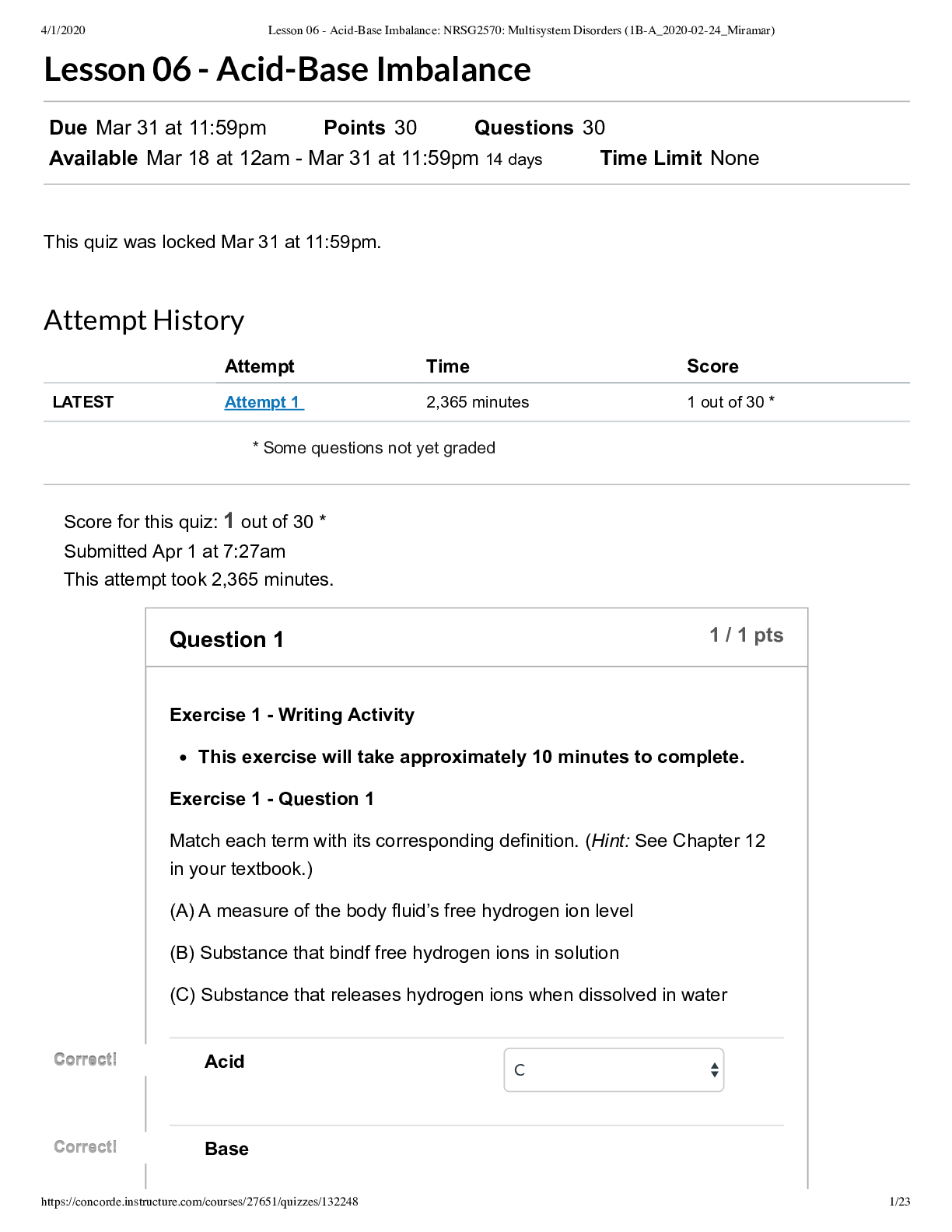


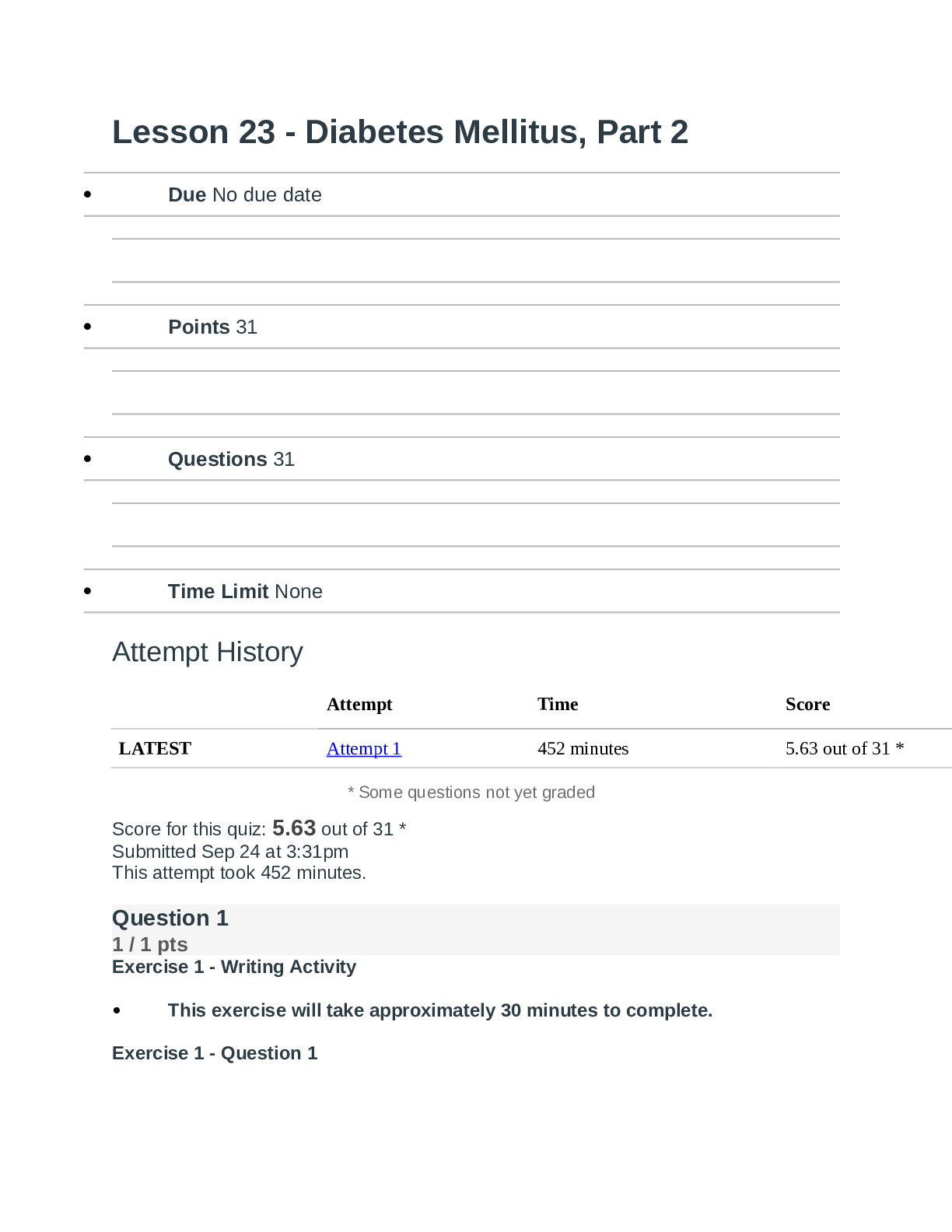
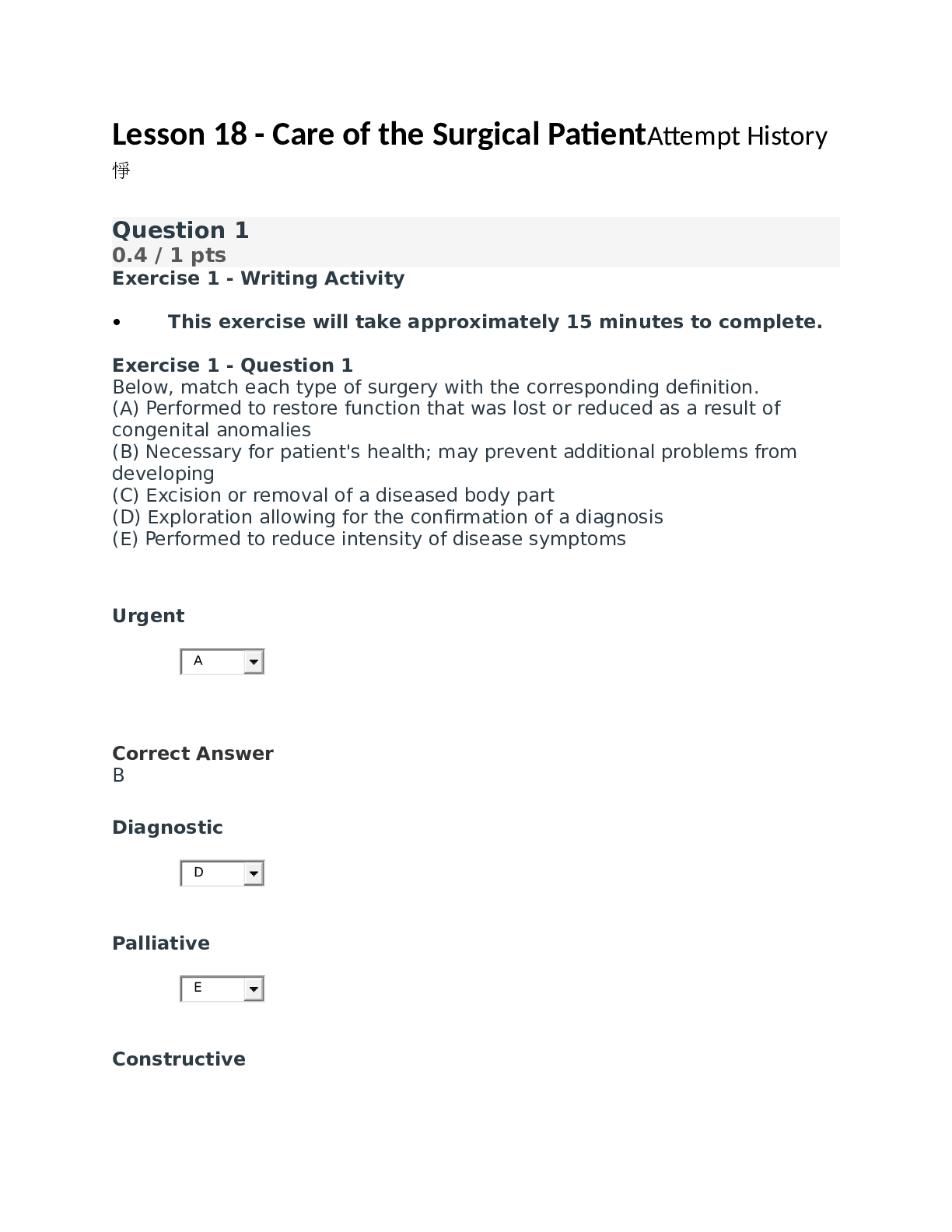
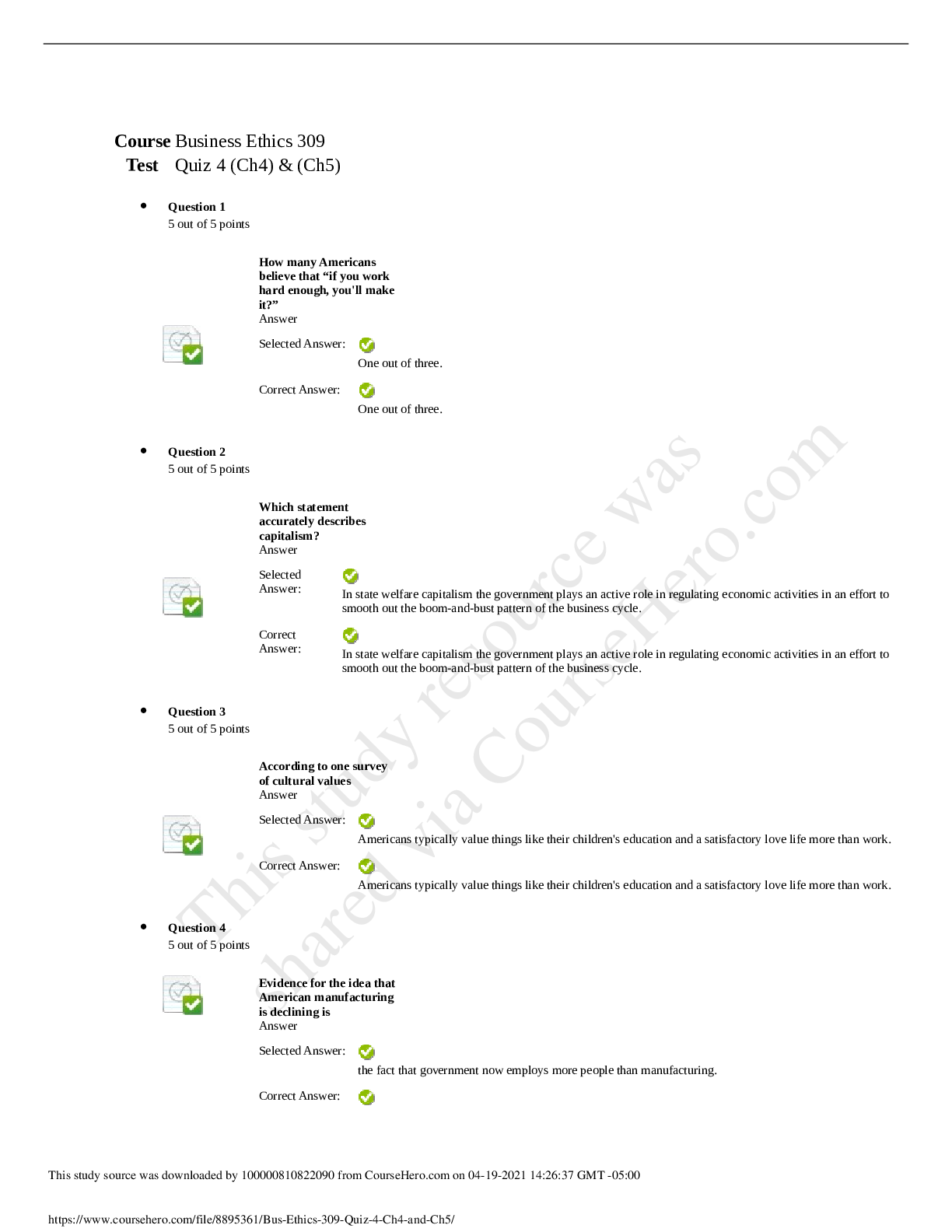

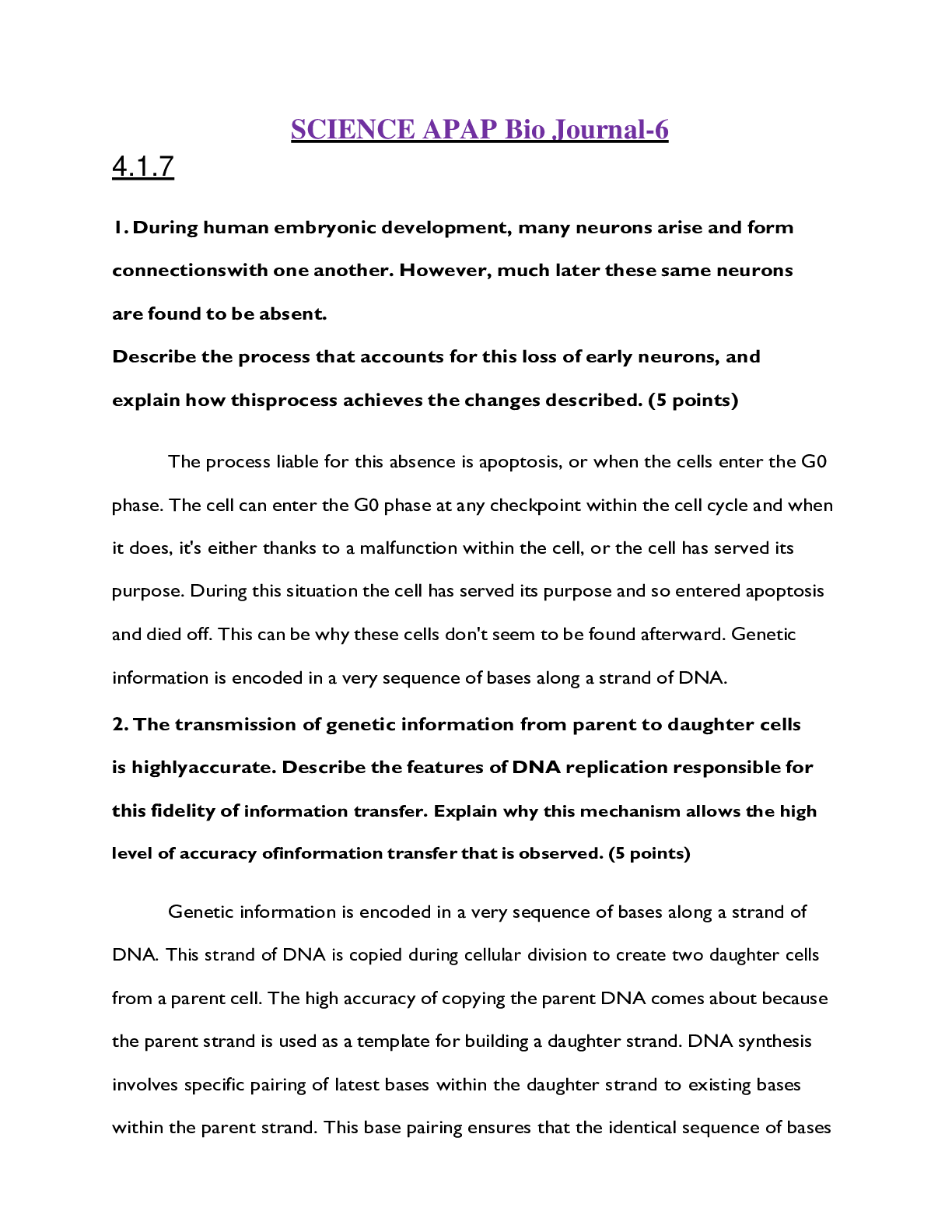
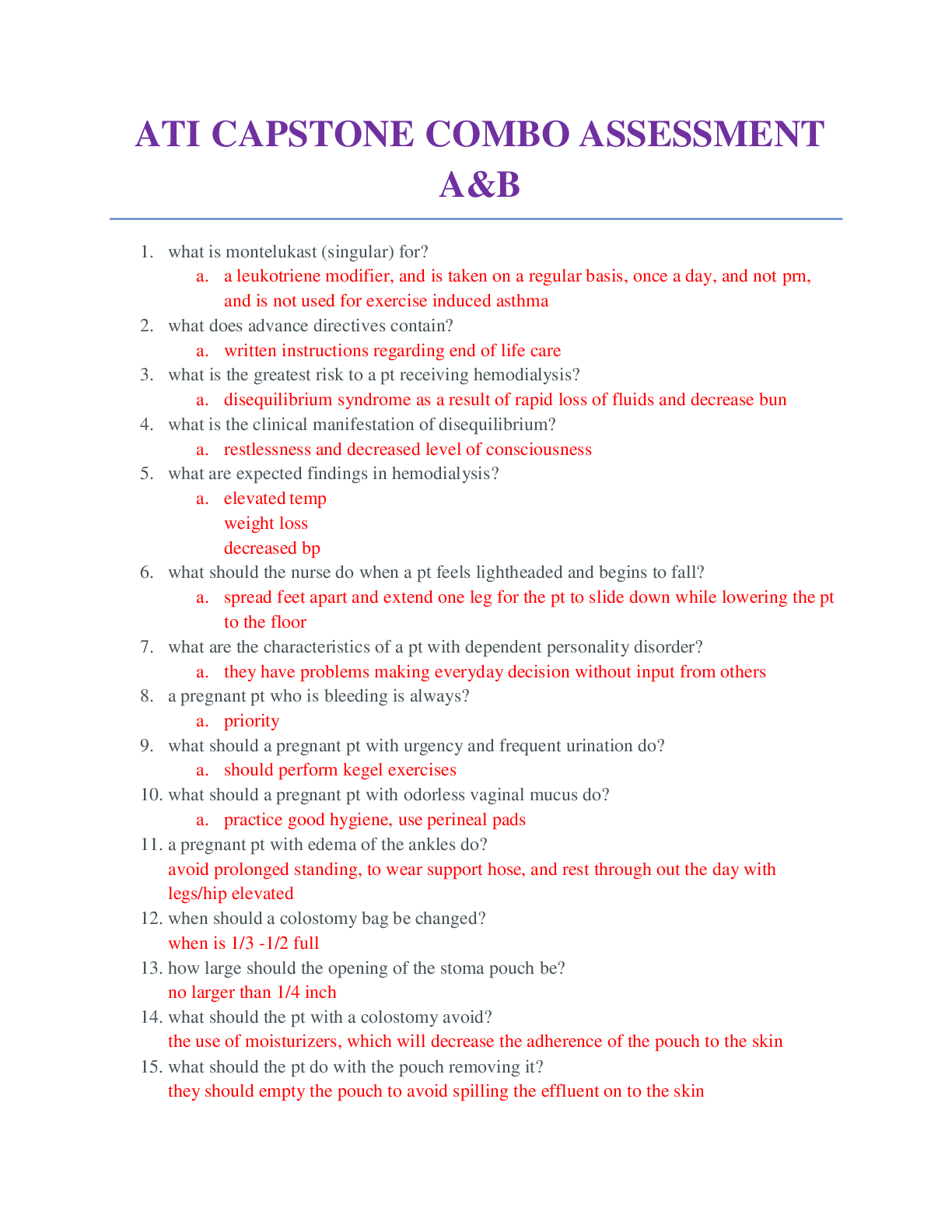
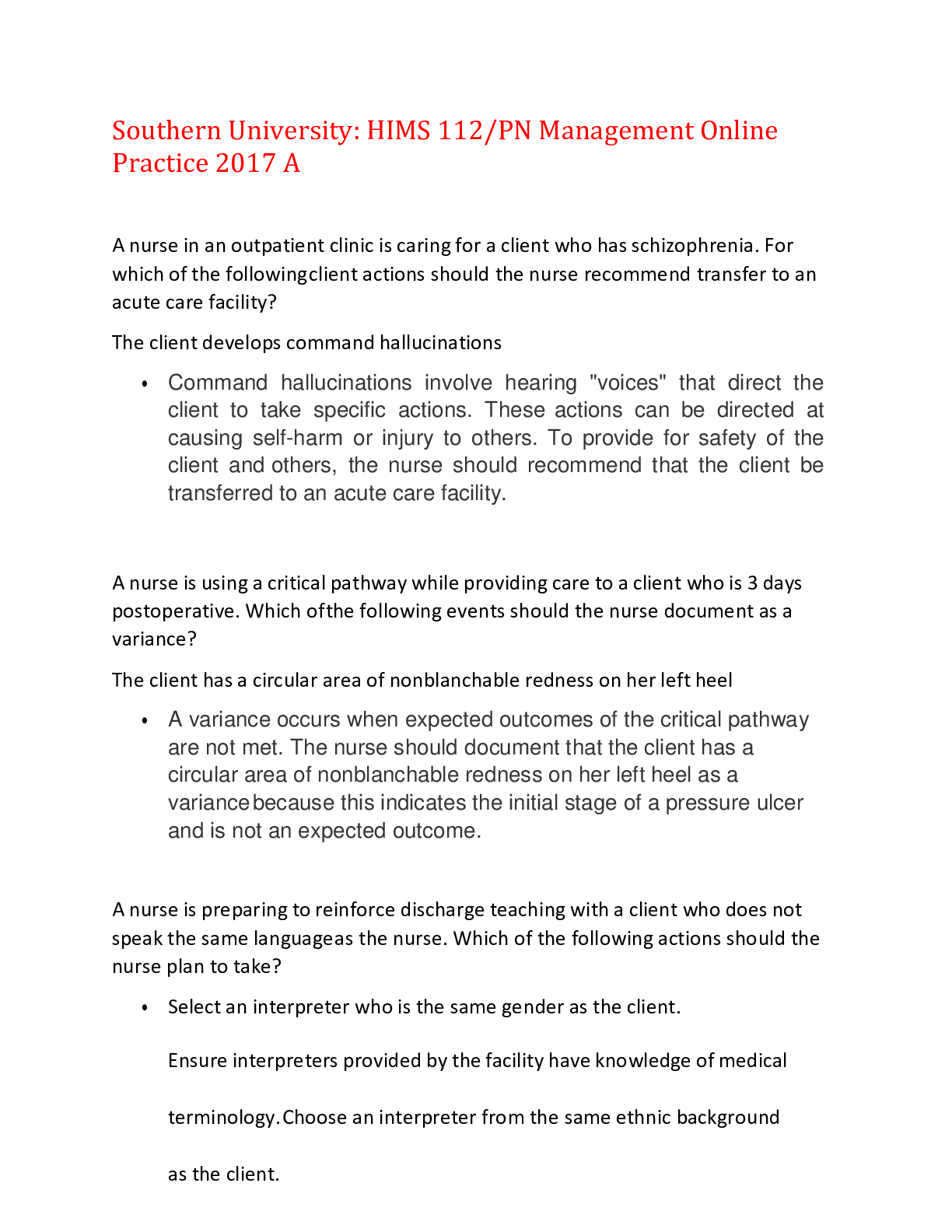
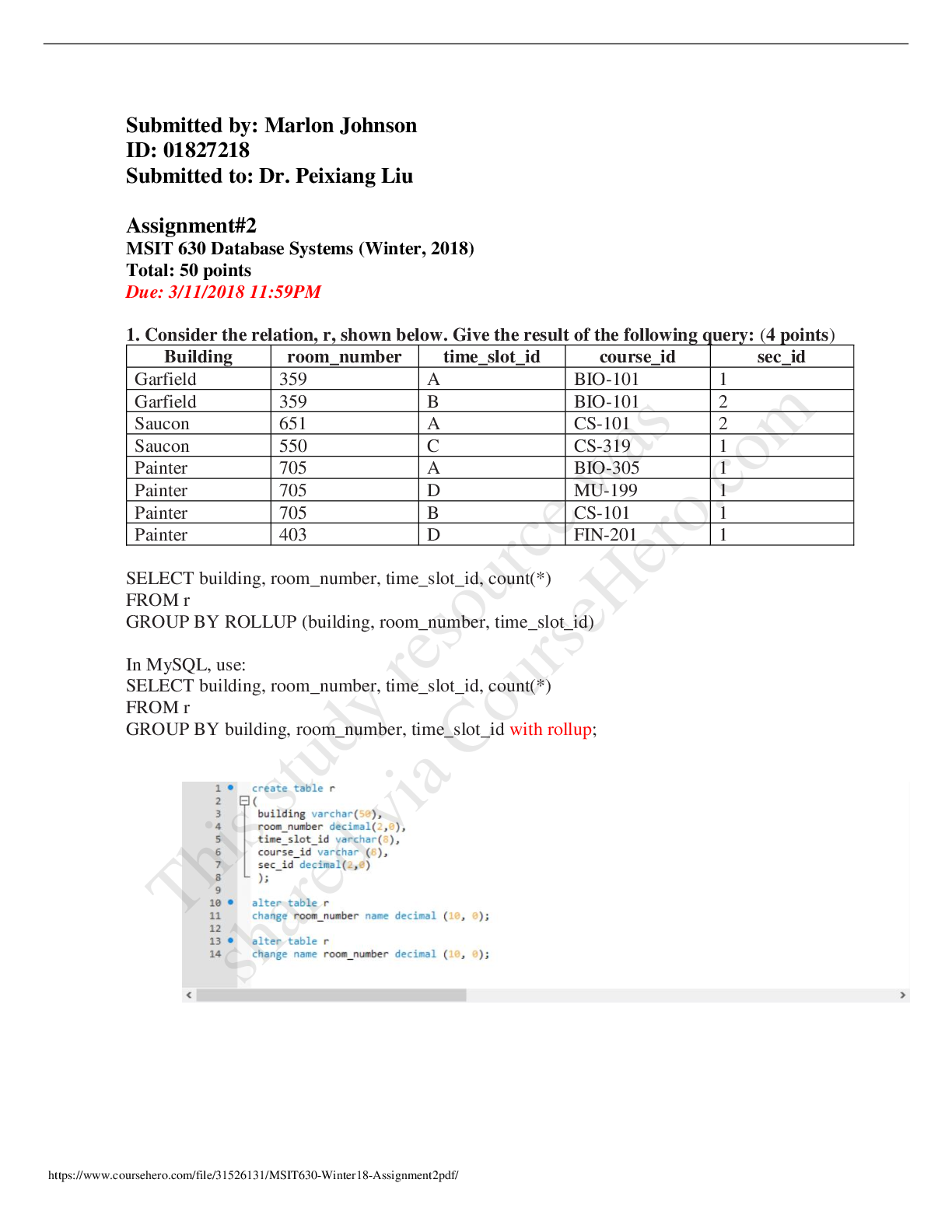


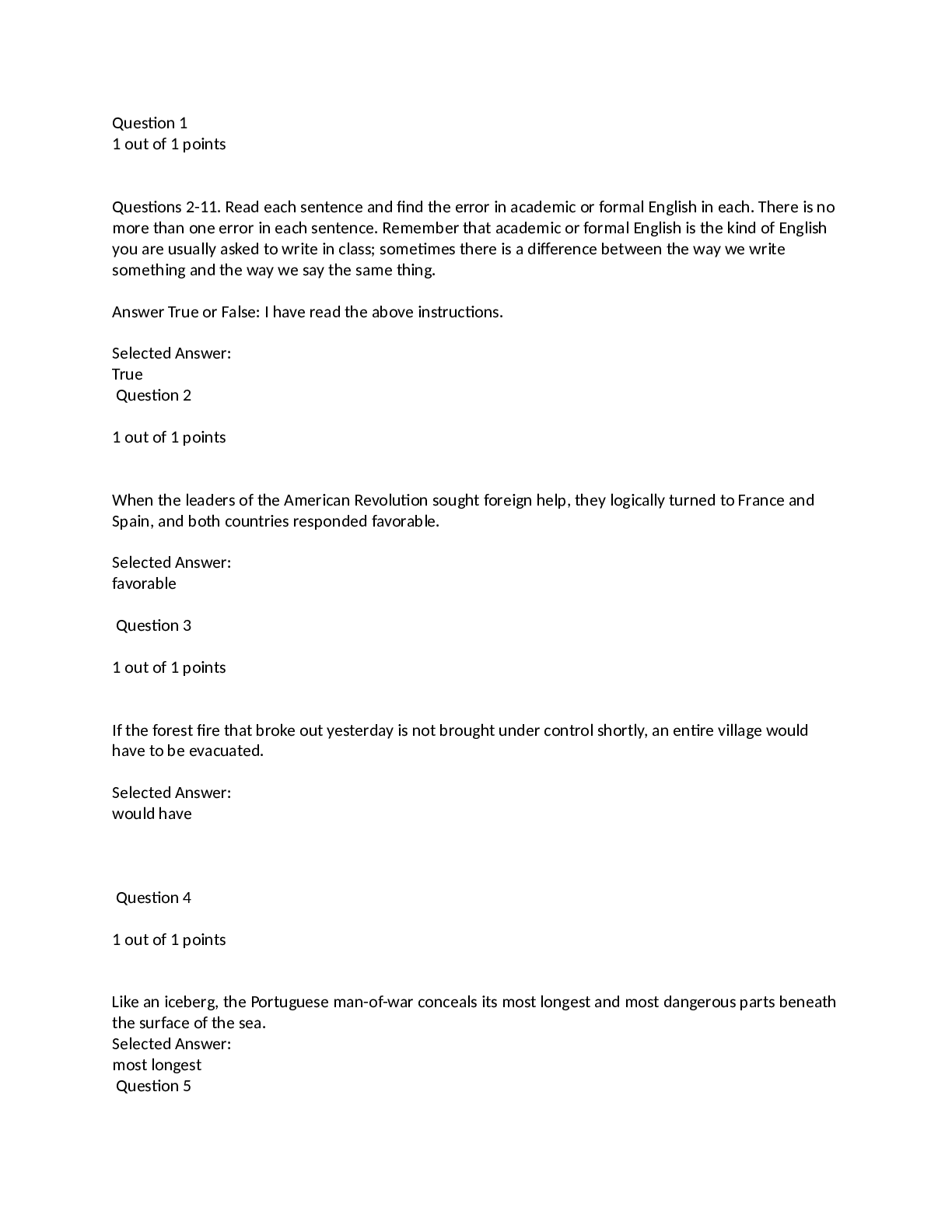
.png)
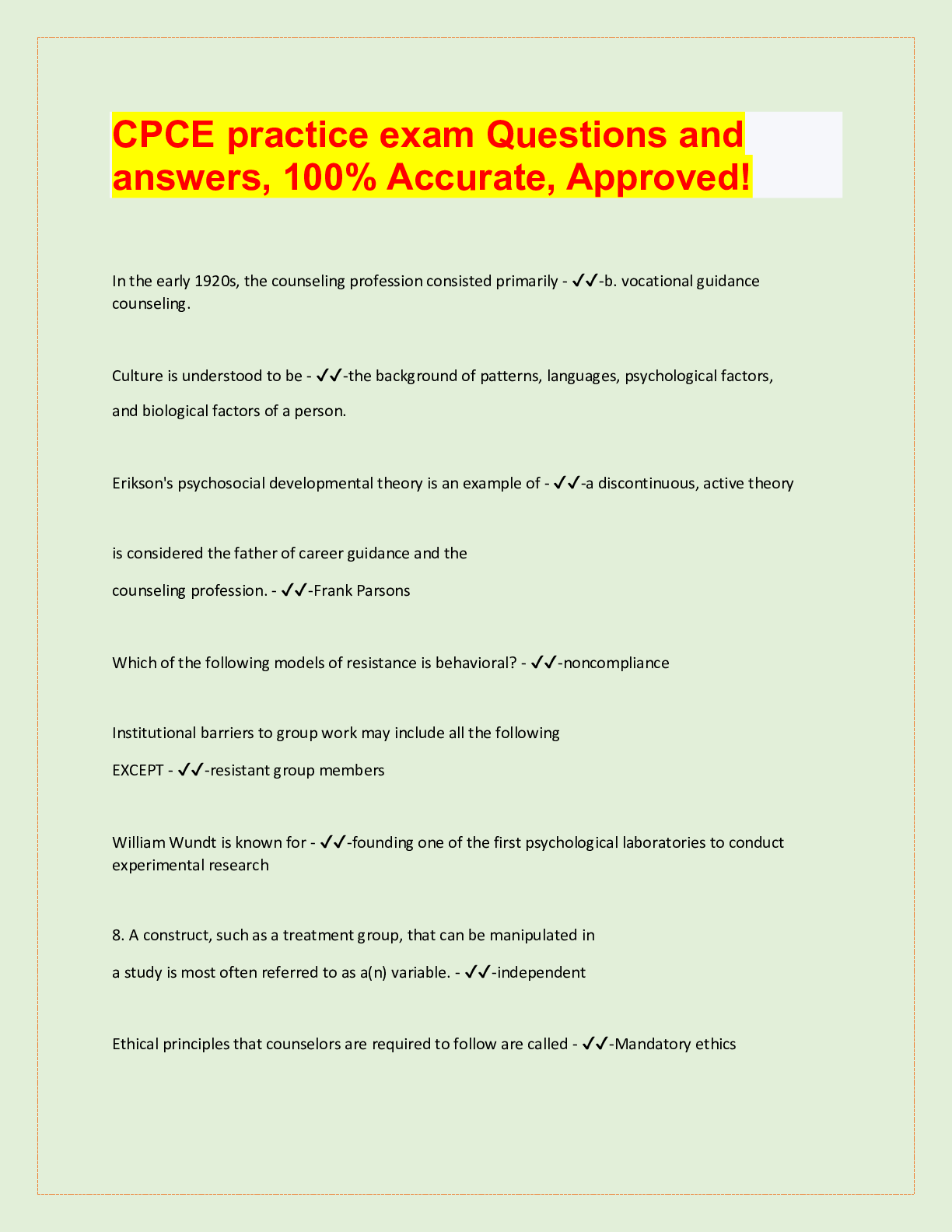
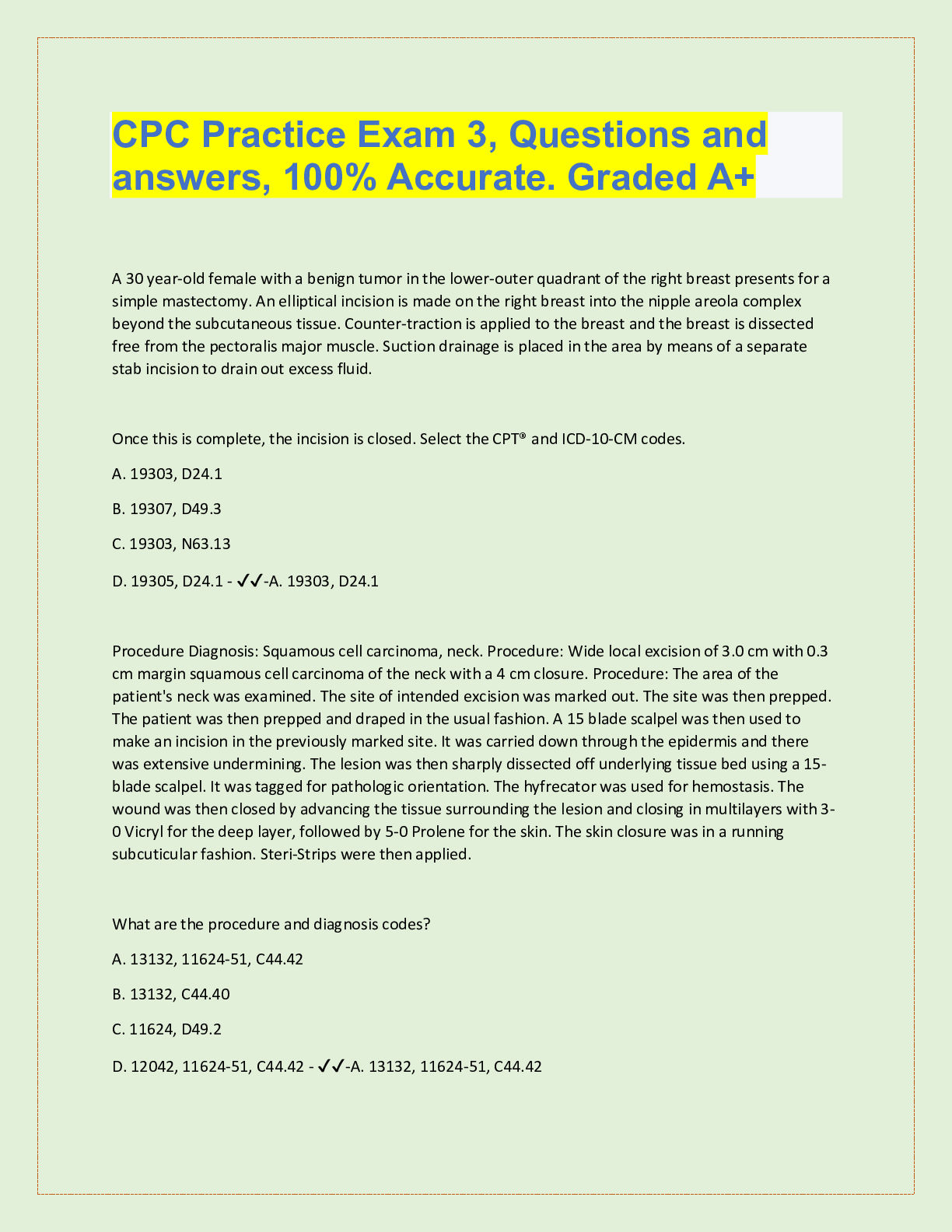
.png)


.png)


.png)

.png)
.png)
.png)


